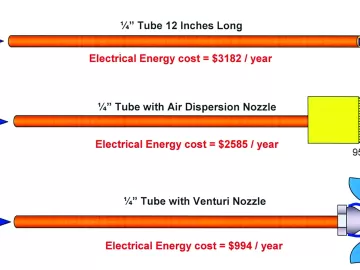The Effects of Ambient Temperature on Centrifugal Air Compressor Performance
It was early summer, the air compressors were above the production floor on a mezzanine, and temperatures were heating up both outdoors and indoors. The compressed air system was comprised of three 500-horsepower centrifugal air compressors, and one 350-horsepower variable speed drive oil-free rotary screw air compressor.












